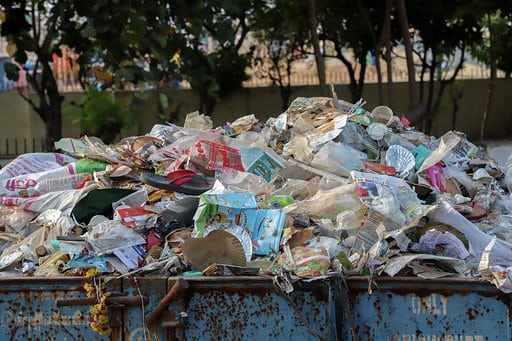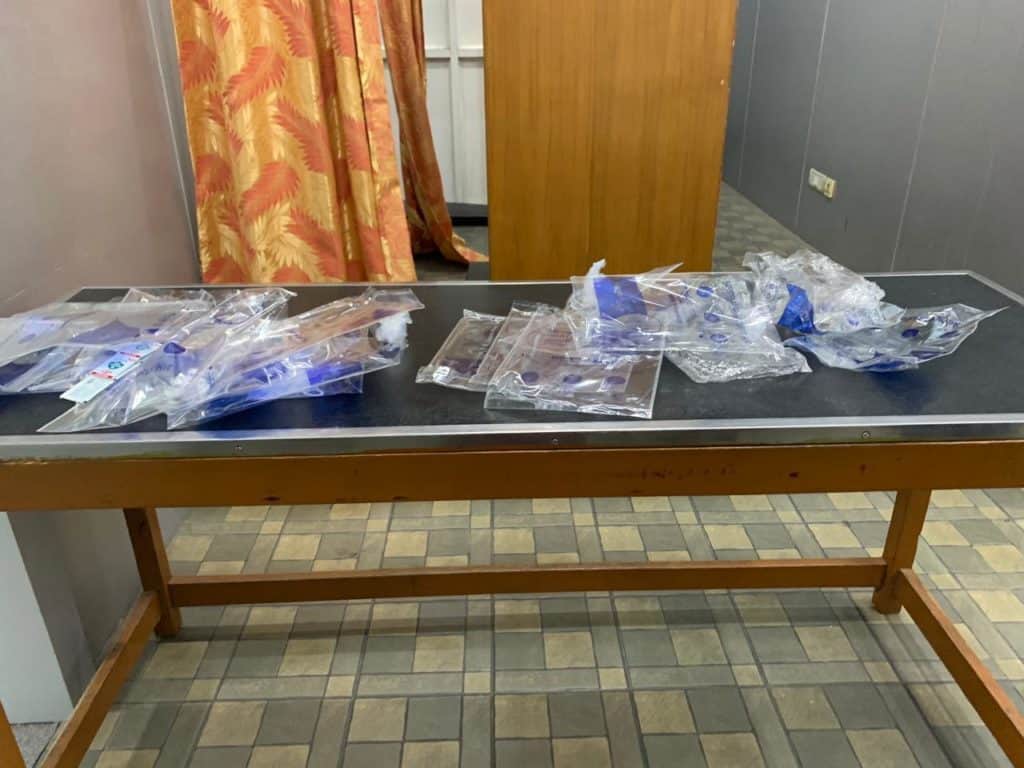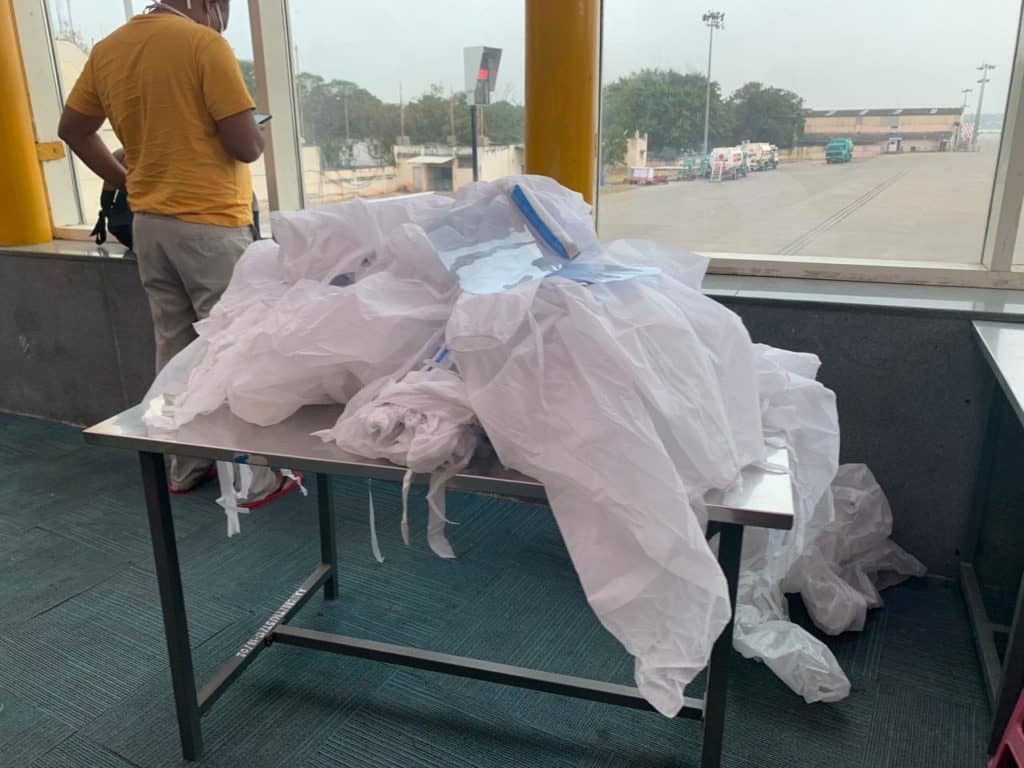It’s one of the less discussed fall-outs of the pandemic. One year of COVID-19 has reversed all the small victories and legitimised the usage of plastic and single-use products in Chennai, dealing a huge blow to the efforts at fostering a more sustainable lifestyle among its citizens.
Immediately after the state government announced the plastic ban in June 2018, the city had started taking sincere steps towards minimising the use of single use plastic (the ban was implemented from January 2019), and in the months that followed Chennaiites appeared to be adapting to a more sustainable, plastic-free lifestyle. Retail and wholesale businesses encouraged people to bring their own bags, the food and beverage industry had attractive offers for those who brought their own cutlery and plastic-free weddings had become a statement.
The sudden shift
When software engineers Sanjana G and Murugan planned to get married, they were determined to make it a plastic-free one. But when they tied the knot a couple of months ago, the event was far from how they had envisaged it. In line with the current norms, all items were plastic-wrapped to ensure hygiene. Plastic water bottles were served along with the food; every guest was given tissues to clean their hands after applying kumkumam to the bride and groom; the kumkumam and turmeric itself were kept in plastic-lined cups instead of the brass metal containers used traditionally.
“We had to let go of our ideologies to dispel the fear among guests. If not for the pandemic, we would have had a plastic-free wedding,” says Sanjana.
Restaurants in the city remained open only for home delivery for a long time. Even after they resumed inhouse dining, with social distancing mandates in place, people still preferred ordering in than going to restaurants. This generated a lot of packaging waste. E-commerce also flourished, leading to more of that. “I always preferred shopping in stores, but the fear of the pandemic has led me to switch to online portals over the past one year,” says Alisha Mathew, a Chennaiite. This is true of many consumers, as a result of which, the quantity of plastic packaging material used has increased multifold.
A question of economics
The compulsions of the pandemic apart, what ultimately decides the fate of the battle against plastic is the mindset of people. The ban had never been implemented in full, but some positive changes had begun to be visible. Much of the credit for these should be given to the enterprises — small and big — who came up with creative solutions and genuinely tried to rein in the use of plastic and disposables. For example, Krishnamurthy, a butcher, went completely plastic-free and was giving out a free egg for customers who brought their own vessels to the meat shop. But this strategy lasted just for a few months and the black plastic bags are back at his shop now.
“Plastic is deep-rooted in our culture. Once I rolled back the incentive of the free egg (as an egg costs Rs 5 now), customers were not interested in bringing cutleries. They would go to another shop that gives plastic bags, when I started charging Rs 2 for a paper bag,” he said.
Read more: “An opportunity for our state to show the way”: Rajendra Ratnoo on plastic ban
When data speaks
Interesting facts have emerged from a survey conducted by the Citizen consumer and civic Action Group (CAG) in 2019 to understand the pre-ban and post-ban scenario, and the response to the ban in the commercial and retail markets of Chennai. Although plastic usage continued in several spaces, shopkeepers and traders knew that it was illegal. “Shopkeepers are finding ways to evade getting caught. There is a need for more public education to build awareness around the ill-effects of plastic and the need for behaviour change,” writes Gabriel Raj, Researcher, Urban Governance, CAG.
Read more: Going zero-waste may not be as difficult as we think; here’s why
CAG conducted another study this year in February 2021 to assess how effective the ban is at present, two years after it was first imposed. The survey of three business landscapes by this research team — the Food and Beverage industry, the retail market and wholesalers — has yielded rather disheartening results. “Of the 1936 wholesale shops we surveyed, all were using at least one form of banned plastic. Plastic bags were used routinely in all the three business landscapes in some form or the other,” said Vamsi Kapilavai, Senior Researcher, CAG. It may be noted that the Tamil Nadu government had enlisted 14 items under the single-use plastic ban in January 2019.
“I went plastic-free for a few months. But we had to impose the higher cost of packaging (paper bags) on customers, which was not received well by them. Also, in this time of the pandemic, when use and throw items seem safe, I cannot ask my customers to bring cutlery”
–– SRIHARI V, A CAFE OWNER
Why isn’t GCC imposing fines?

In the months after the announcement of the plastic ban in January 2019, the Greater Chennai Corporation (GCC), the nodal agency for imposing the ban in the city was actively monitoring the situation on the ground. They raided restaurants, wholesale and retail markets and imposed fines on those who flouted the ban. The fear of penalties stopped shopkeepers from using plastic publicly. Flower sellers began to wrap flowers in plantain leaves and in vegetable markets, people were seen bringing their manjapais (yellow cloth bags).
According to statistics shared by GCC with Citizen Matters, the civic body raided a total of 388315 shops in 2019, seizing 312002 kg of plastic and collecting fines worth over Rs 1 crore from the city. However, these numbers decreased significantly in 2020, indicating that the civic body was not as vigilant as during the previous year.
| Year | Shops raided | Plastic seized (in Kg) | Fine amount collected (in Rs) |
| 2019 | 388315 | 312002 | 10513700 |
| 2020 | 73992 | 5837 | 3004500 |
In their defence, the GCC officials have been completely engaged in fighting the pandemic since early 2020. “Every department of GCC was caught up trying to rein in the pandemic and minimise its impact,” said Additional City Health Officer, M Jagadeesan. The health department of GCC, which is in-charge of implementing the ban — monitoring shops, identifying and penalising violators, is incidentally also entrusted with setting up fever clinics, contact tracing and supervising human resources in the battle against the killer virus.
“The health department with its 42 sanitary officers, 200 sanitary inspectors and zonal health officers will intensify the drive against plastic usage post elections,” Jagadeesan assured.
Finding feasible solutions
While the pandemic has validated the use of PPE kits and single use plastic masks, it has also created paranoia among certain people, who are overdoing it. The main driver has been the pandemic-induced fear. “There is so much misinformation that people are choosing to err on the side of caution and often going overboard in their use of protective gear. There needs to be a move away from disposables towards reusables which is not a very difficult task to achieve,” said Dharmesh Shah, policy advisor to the Global Alliance for Incinerator Alternatives (GAIA).

Questions that cannot be ignored
COVID realities notwithstanding, the effectiveness of any movement against plastic use also requires a practical resolution of two key related issues. One, what happens to the single-use plastic economy? Second, how can the cost of the plastic alternatives be reduced?
The single use economy is indeed big and has only grown since the pandemic. The challenge of reducing the cost of alternatives lies in the hands of government agencies such as GCC. “During the initial days of the ban, GCC facilitated the transition by creating a market for recyclable materials,” says Vamsi. But then, changes are also warranted at the policy level for a large scale shift to happen. “For example, recycled bricks made from construction and demolition waste have a higher GST than the others. Why would a consumer go for recycled ones?” Vamsi asks.
On a similar note, Dharmesh said, “Plastic is cheap because of the externalities associated with it. If the government were to add an environmental tax on the material incorporating the economic costs of the harms it causes, it will make the cost differential argument irrelevant.”
“We have enough legislation and bans to regulate its use, but the challenge is the same as with all other laws — poor implementation,” says Dharmesh. “The issue of alternatives is tricky, as we can never replace single-use plastic with other materials like paper or cloth or bio-plastics. The aim should be to wean consumers away from the disposable culture that we have gotten so used to, because of the convenience it offers.”
Also read:

